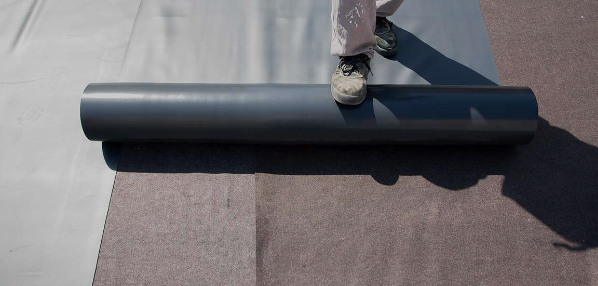- Understanding the Role of Geomembrane Liners in Waste Management
- Innovations in Geomembrane Liners for Water Management
- Geomembrane Liners: A Comprehensive Guide
- The Future of Geomembrane Liners in Civil Engineering
- Geomembrane Liners: Enhancing Landfill Stability
Manager:Alvin Wang
WhatsApp:+62 8983806051
Tel:+86 10-5797-1075
Email:steelwang@okorder.com
Address:3rd Floor, No.2 Building, No.1 Sanlihe Road
How strong is HDPE geomembrane compared to steel?
When it comes to construction and engineering, strength is one of the major factors that should be considered while selecting materials for critical uses. In terms of durability and toughness, steel has always been the strongest material known to man. But how does High-Density Polyethylene (HDPE) geomembrane stack up against it? This article will explore different mechanical properties of hdpe Geomembrane and steel, analyze their strengths and applications thereby concluding who wins in terms of longevity and resilience.

Understanding HDPE Geomembrane
Composition and Properties:
HDPE geomembranes are thermoplastic polymers made from ethylene monomer units. They possess excellent strength, flexibility and chemical resistance which makes them ideal for lining landfills, ponds or reservoirs where containment is critical. It acts as an impermeable barrier against liquid/gas migration that ensures environmental protection as well as public safety.
Applications:
HDPE geomembranes find many uses across various industries such as civil engineering; environmental protection; geotechnical works etcetera. From hazardous waste disposal sites to water storage tanks, this material serves well in preventing pollution caused by leakages while guaranteeing structural integrity of any containment system used.
Understanding Steel
Composition and Properties:
Steel is an alloy consisting primarily of iron with small amounts carbon along other elements like manganese, chromium or nickel added depending on required qualities desired . It has great tensile strength which makes it very hardy but also versatile since it can be shaped into different forms easily without breaking apart too soon afterwards. These features have made steel become one the most widely used construction materials worldwide due its exceptional robustness where necessary . Mechanical properties such hardness , Young’s modulus etc make this metal suitable for various structural/industrial applications because they provide good resistance against stressors like high temperatures or heavy loads imposed upon them by machines during operations.
Applications:
Steel is employed across different sectors ranging from manufacturing industry; automotive sector ; infrastructure development among others . It has been employed in creating beams used within buildings together with columns holding them together thereby forming stable structures all around us . Bridges are made out of it not forgetting pipelines connecting cities which carry gases such as oil or natural gas . Also ,machinery parts like gears and shafts for engines are manufactured from this metal due to its strength properties required in running heavy duty machinery or vehicles .
Strength and Durability Analysis
Tensile Strength:
This is the ability of a material to resist breaking when subjected to stretching forces . Steel usually has higher tensile strength than HDPE geomembrane but then again latter also provides adequate tensile strength for expected uses. The thickness may affect its formulation as well as manufacturing processes thus leading into lower values if compared against steel.
Flexural Strength:
It measures how much resistance can be offered by a given substance against bending or deformation under external loads without breaking apart completely. Flexural strengths exhibited by steels are generally greater than those shown by hdpe liners because crystalline structures found in metals enable them withstand more stressors before yielding occurs. Nevertheless, flexibility coupled with resilience possessed
Corrosion resistance is a crucial factor in applications exposed to dampness, humidity and chemical corrosives. Steel, unlike HDPE geomembrane which is corrosion resistant by nature, necessitates guarding coatings or alloying elements for it not to corrode. Its polymeric composition and non-metallic nature give it immunity against rusting; this also lowers the need for maintenance as well as life cycle costs since oxidation and galvanic corrosion cannot affect it.

Conclusion
In conclusion, although steel serves as a reference point for strength and durability in most construction undertakings; there are certain containment and environmental protection jobs where high density polyethylene (HDPE) geomembranes perform better than any other material. Flexibility is one area that steel lacks when compared with HDPE liners but this does not mean that they should be written off completely because of chemical resistance coupled with resilience makes them suitable substitutes especially where projects demand impermeable barriers like landfill liners, pond liners or even reservoir covers. Engineers can achieve better results if they know how these two materials behave under different conditions during use so that appropriate decisions can be made by project managers based on their knowledge about mechanical properties associated with both steels used alongside such membranes as those made from HDPE among others which may crop up within their purview while carrying out various engineering works.
- Previous:What is the life expectancy of HDPE geomembrane?
- Next:At what temperature does HDPE geomembrane become brittle?
-
2024-12-05Geomembrane Liners: A Comprehensive Guide






